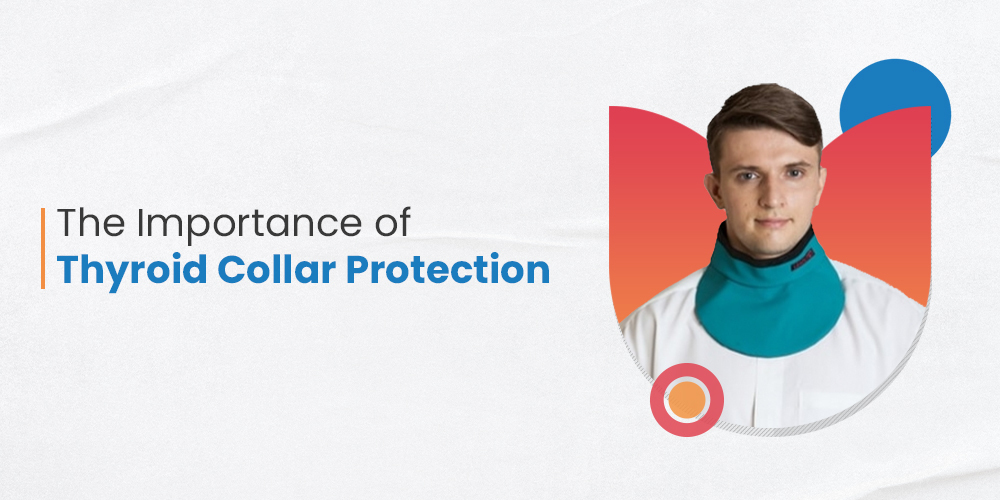The butterfly-shaped thyroid gland on the neck helps in our body’s metabolic and other vital activities by releasing and controlling the thyroid hormones. This fundamental endocrine gland is among the most susceptible areas to get affected easily by the scattered radiation.
Doctors, patients, physicians, radiologists, and other medical professionals who are performing or undergoing medical procedures without adequate protection are at a risk from scattered radiation. Frequent or increased exposure to radiation from medical applications like X-rays, CT scans, Fluoroscopy, and Dental X-rays can lead to the increased risk of thyroid cancer, hypothyroidism, and thyroid nodules. Hence, it is important to consider the usage of thyroid shields during therapeutics or diagnostics by both the patients and the physicians, radiologists, or operators.
Not all medical settings or work require the usage of thyroid shield or collar and the decision to wear one can be decided on the ALARA principle. ALARA (As-Low-As-Reasonable-Achievable) is based on three factors as such, the time/duration of exposure to radiation, the distance between the radiation source and the exposed person, and is the shielding equipment is appropriate to provide radiation protection.
How to check if a thyroid shield is shielding you properly?
Certain factors can help in checking if a thyroid shield is working properly or not.They are
The Material:
Generally a thyroid shield is made of lead or non-lead material and the latest thyroid collars are latex-free with standard radiation protection of 0.5 mm Pb equivalency.
The butterfly-shaped thyroid gland on the neck helps in our body’s metabolic and other vital activities by releasing and controlling the thyroid hormones. This fundamental endocrine gland is among the most susceptible areas to get affected easily by scattered radiation.
Doctors, patients, physicians, radiologists, and other medical professionals who are performing or undergoing medical procedures without adequate protection are at a risk from scattered radiation. Frequent or increased exposure to radiation from medical applications like X-rays, CT scans, Fluoroscopy, and Dental X-rays can lead to an increased risk of thyroid cancer, hypothyroidism, and thyroid nodules. Hence, it is important to consider the usage of thyroid shields during therapeutics or diagnostics by both the patients and the physicians, radiologists, or operators.
Not all medical settings or work require the usage of a thyroid shield or collar and the decision to wear one can be decided on three factors as such, the time/duration of exposure to radiation, the distance between the radiation source and the exposed person, and is the shielding equipment is appropriate to provide radiation protection.
How to check if a thyroid shield is shielding you properly?
Certain factors can help in checking if a thyroid shield is working properly or not. They are as below
The Material:
Generally, a thyroid shield is made of lead or non-lead material with standard radiation protection of 0.5 mm or 0.3 mmPb equivalency.
The Way to be Worn:
Thyroid Shields can have a loose or snug fit around the neck based on the design and comfort. While buying a shield, it is always better to try and check the comfortability for easy movement of the neck and head.
Kiran’s wide range of thyroid shields provides complete protection to the neck and sternum from ionising radiation. The Thyroid shields are available in 3 different designs named Elegant, Harmony & Slimline. The Thyroid Shields are designed with an adjustable fastener, velcro closure, or magnetic closure, and have lead equivalence of 0.50mm Pb or 0.35mm Pb.
Every part of the human body has to be taken care of well for a longer life span. Proper radiation protective measures with necessary gears, apparels, and equipment are essential.

